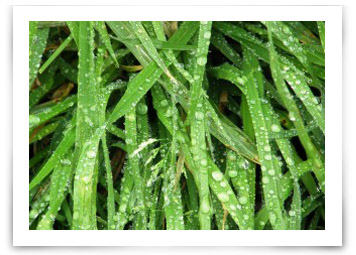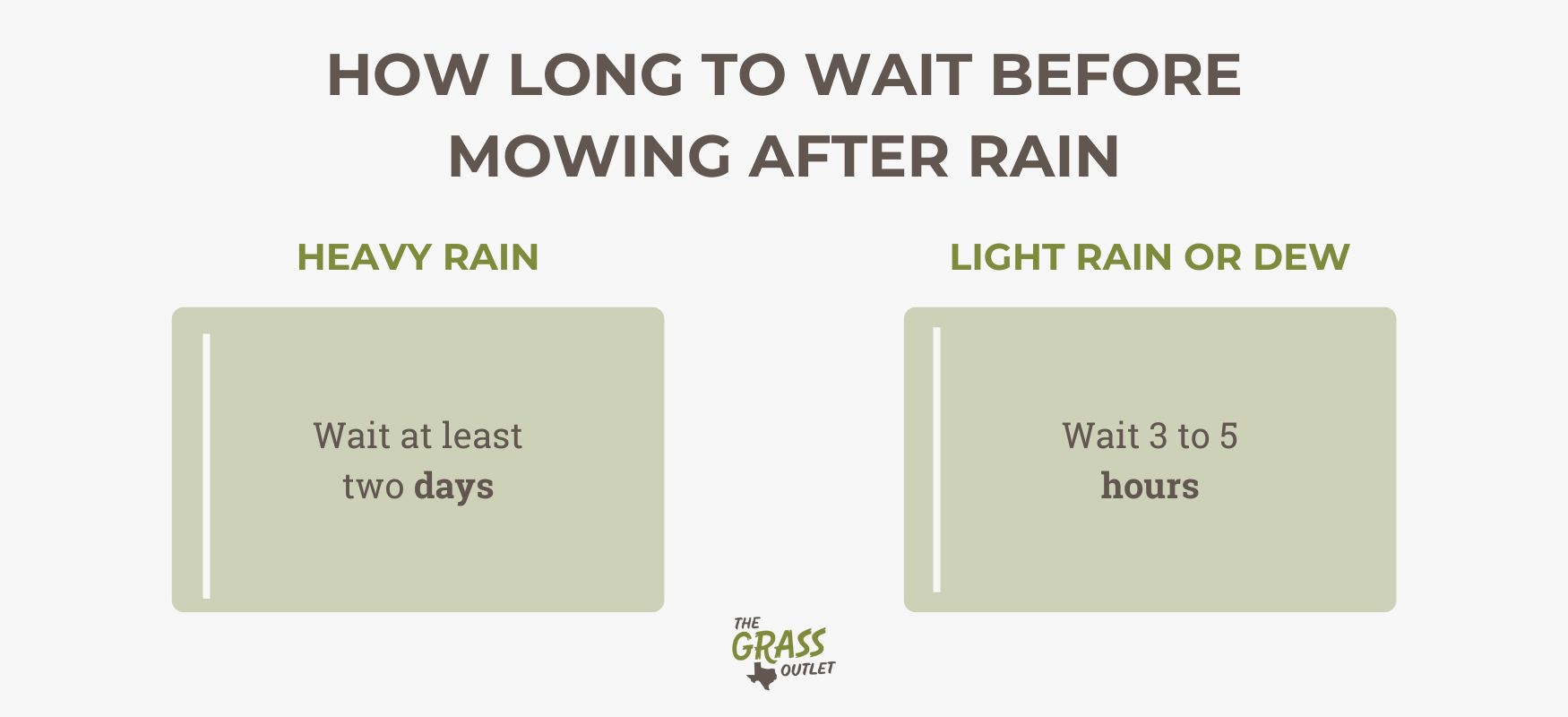Picture this: it’s a sunny morning after a night of refreshing rain, and your lawn is looking lush and green. You’re eager to grab your mower and tackle the grass that seems to have grown overnight.
But wait—how soon after it rains can you actually mow the lawn without risking damage to your yard or your equipment? This question might seem simple, yet it’s vital for maintaining a healthy, vibrant lawn. We’ll explore the factors you need to consider before firing up your mower post-rain.
You’ll discover why timing matters and how making the right decision can save you time, money, and effort in the long run. So, if you want to keep your lawn looking its best with minimal hassle, keep reading to find out the perfect moment to mow after the rain. Your lawn will thank you!

Credit: www.wrightmfg.com
Assessing Lawn Conditions
Rain affects lawn mowing timing. Wait until the grass dries to prevent damage. Usually, a sunny day helps it dry faster.
Assessing the conditions of your lawn after it rains is crucial for determining the best time to mow. Mowing too soon can damage the grass and your mower. Patience can lead to a healthier, more attractive lawn. But how do you know when the time is right? Let’s break it down into simple steps. ###Check Soil Moisture
Start by inspecting the soil. Is it still soggy or starting to dry? Push a screwdriver or stick into the ground. If it slides in easily and comes out with soil clinging to it, the ground is too wet. Wait a bit longer for better results. ###Observe Grass Blades
Look closely at the grass. Are the blades sticking together or standing up straight? Wet blades tend to clump, which can lead to uneven cuts and clogged mowers. If they are upright and separate, you’re good to go. ###Test Walkability
Take a walk across your lawn. Do you leave footprints? If so, the soil is likely too soft, which can lead to ruts from the mower. No footprints? Your lawn is ready for a trim. ###Consider Weather Forecast
Check the weather forecast. If more rain is expected soon, waiting until after the next downpour might be wise. On a sunny day, your lawn will dry faster, allowing you to mow sooner. ###Reflect On Personal Experience
Think about past experiences. Have you mowed too soon before and faced clumps of grass or a sputtering mower? Learning from these instances can save time and effort in the future. ###Ask: Is Your Mower Ready?
Is your mower equipped for wet conditions? Some mowers handle damp grass better than others. Make sure it’s clean and sharp for the best performance. By considering these factors, you ensure your lawn remains lush and healthy. How do you decide when to mow after rain? Share your tips and tricks in the comments!
Credit: atlasturf.com.au
Optimal Mowing Time
Mow the lawn once the grass is dry to prevent damage. Wet grass can clog the mower and cause uneven cuts. Waiting a few hours after rain ensures the best results.
When rain graces your lawn, it’s tempting to rush out and mow the moment the skies clear. But patience is a virtue, especially when it comes to mowing wet grass. Mowing too soon can damage your lawn and your mower. Knowing the optimal time to mow after rain ensures your grass stays healthy and your equipment runs smoothly. Let’s dive into finding that perfect timing.Understanding Grass Moisture
Wet grass clumps together, making it difficult to mow evenly. This can lead to an uneven cut and potentially clog your mower. Additionally, wet grass can create slippery conditions, posing safety risks. Touch the grass to check if it feels dry and light. If the blades stick together or feel heavy, it’s best to wait a bit longer.Checking Soil Conditions
The soil plays a crucial role in determining mowing time. If it’s soggy, your mower can sink and create ruts. Press down on the soil with your foot. If your footprint remains, the ground is too wet for mowing. Wait until the soil returns to its normal firm texture. This prevents damage and ensures a smooth mowing experience.Weather Considerations
Consider upcoming weather patterns. If more rain is forecast soon, hold off on mowing. A sunny day after the rain helps dry out your lawn quicker. Observe the weather and choose a day with clear skies and a gentle breeze. These conditions accelerate drying, making it the ideal time to mow.Equipment Readiness
Ensure your mower is ready for the task. Wet grass dulls blades faster. Check that your mower blades are sharp and in good condition. This guarantees a clean cut, reducing stress on the grass. Regularly maintain your mower to keep it efficient and prepared for any mowing conditions.Timing Your Mow
Aim to mow when the lawn is dry but not parched. Late morning or early afternoon is often ideal. The morning dew has evaporated, and the sun hasn’t reached its peak intensity. This timing minimizes stress on the grass and maximizes mowing efficiency.Personal Experience Insight
Once, I rushed to mow my lawn right after a drizzle. The grass was still damp, and my mower struggled, leaving behind clumps and an uneven cut. Waiting just an hour would have saved me trouble. This taught me the importance of patience and proper timing in lawn care. Have you ever faced a similar dilemma with wet grass? What steps did you take to ensure optimal mowing conditions? Share your experiences and insights; they might help others avoid common pitfalls.Tips For Wet Lawn Maintenance
Mowing the lawn after rain can be tricky. Wait until the grass is dry to avoid clumping. Typically, this means waiting a day or two for optimal conditions. Adjust the mower height to avoid damaging wet grass and ensure a clean cut.
Maintaining your lawn after a rainstorm can be tricky, but with the right approach, you can ensure your grass stays healthy and lush. Wet lawns pose unique challenges, from potential soil compaction to mower damage. However, with the right tips, you can navigate these obstacles effectively. Discover how you can mow your lawn even after a downpour while keeping its vibrant appearance intact.Check Soil Saturation
Before you start mowing, take a moment to check the soil’s moisture level. You can use a simple trick: step on the grass lightly. If water rises or mud sticks to your shoes, it’s too wet to mow. Waiting a day or two allows the soil to dry enough to avoid compaction, which can damage the roots.Use A Sharp Blade
A sharp mower blade is crucial when dealing with wet grass. Dull blades can tear the grass rather than cut it cleanly, leading to diseases. Sharpen your blades regularly to ensure a clean cut. This will also help prevent your mower from clogging with wet clippings.Adjust Mower Height
Raise the mower deck to a higher setting. This reduces the stress on the lawn and prevents the mower from scalping the grass. Cutting too low can expose grass crowns and create bare patches. A higher cut allows the grass to recover faster from the rain.Consider Mulching
Mulching can be beneficial for wet lawns. It helps return nutrients to the soil while keeping moisture levels balanced. Mulch clippings evenly across the lawn to avoid clumping. This practice not only nourishes the grass but also improves its resilience.Mow In Patterns
Change your mowing pattern each time. This prevents soil compaction and keeps the grass growing upright. Experiment with different directions to discover which pattern works best for your lawn’s condition. Plus, varied patterns can give your lawn a professional look.Take Breaks
Mowing a wet lawn can be more physically demanding. Take regular breaks to assess how your lawn is responding. Are the clippings spreading evenly? Is the mower struggling? These checks can help you adjust your strategy and protect your lawn from undue stress. Maintaining a lawn after rain isn’t just about timing; it’s about understanding the grass’s needs. How have you managed your lawn after a downpour? Share your tips and experiences in the comments below.
Credit: thegrassoutlet.com
Conclusion
Mowing after rain needs careful timing. Wet grass can damage the lawn. Waiting for the grass to dry is wise. This prevents clumping and uneven cuts. Check the soil; it shouldn’t be soggy. Dry soil supports healthy mowing. A few hours of sun can help.
Patience ensures a clean, healthy lawn. Remember, mowing in dry conditions promotes growth. Your lawn thrives with proper care. Good timing makes a difference. Keep an eye on the weather. Your lawn will thank you with lush, green grass. Happy mowing!

